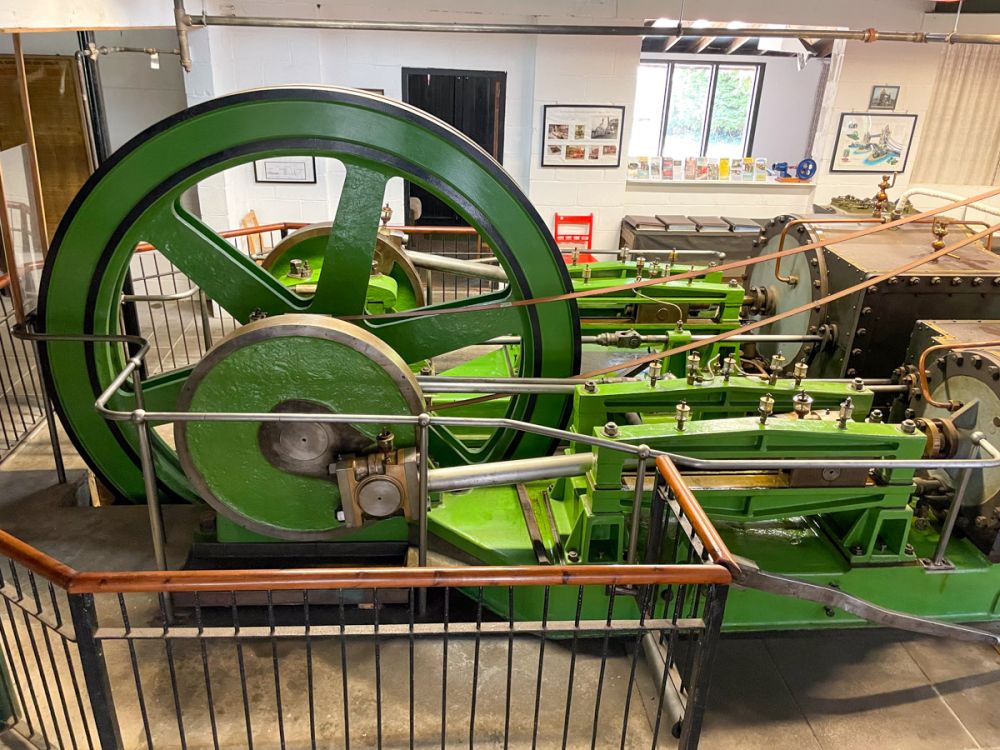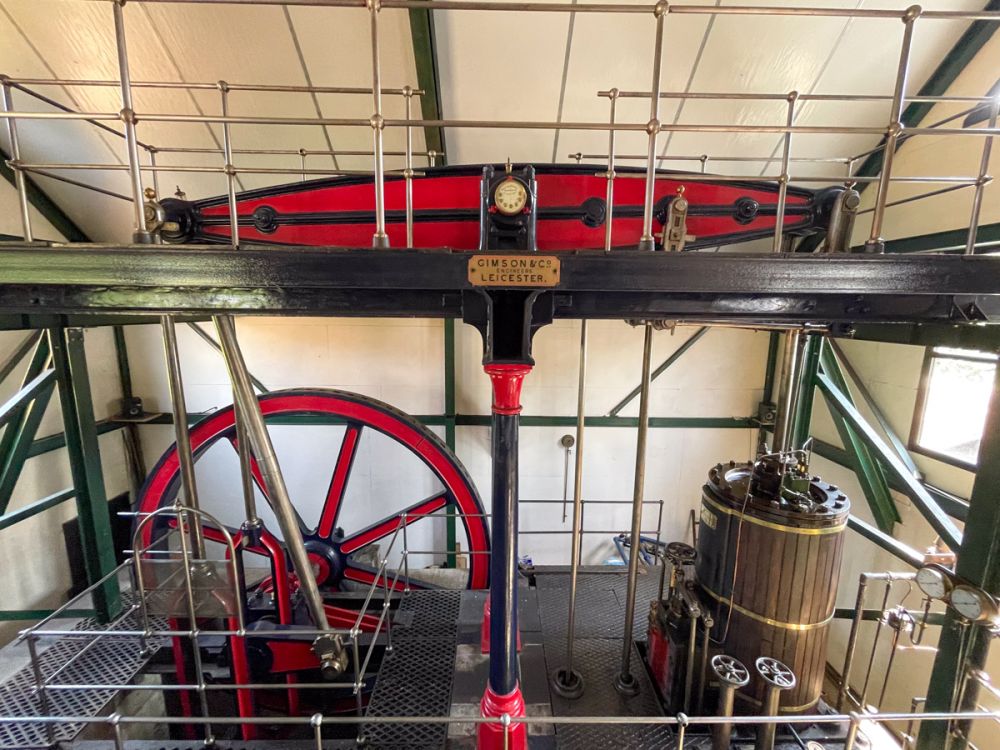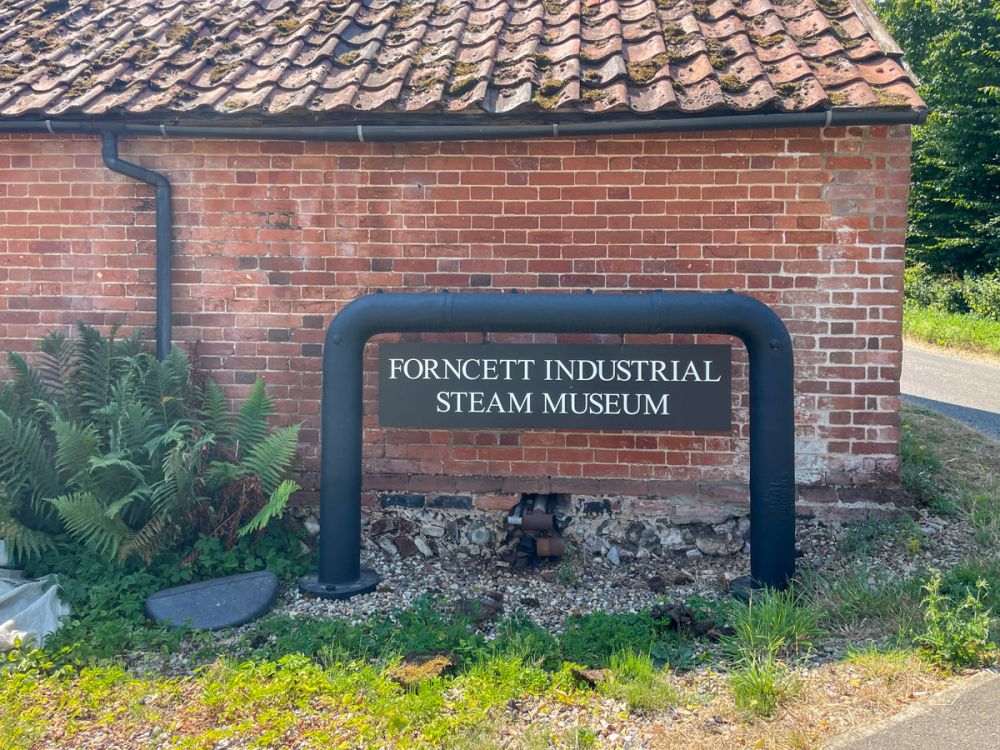The Forncett Industrial Steam Museum is one of the most curious and unique places to visit in the Norfolk countryside. Filled with steam-powered machines of every shape and size, it’s a must-see if you’re fascinated by gigantic old wheels and industrial engineering. Beyond its visual appeal, the museum offers a powerful insight into the Industrial Revolution and steam power’s remarkable role in shaping the modern world.
Table of Contents
Steam Power in Action: What to See at the Forncett Industrial Steam Museum
The Forncett Industrial Steam Museum hosts a wide range of exhibits that explore the fascinating history of steam power. One of the museum’s most popular attractions is its extensive steam engine collection. It features machines from different eras and industries across England. During the museum’s open days, you can see the engines in action. It’s a fantastic way to gain insight into their history and their vital role in powering the Industrial Revolution.
PLAN YOUR TRIP TO ENGLAND
Stay connected in England with a giffgaff free SIM or an Airalo eSim for seamless data coverage throughout the UK. Additionally, rent a car in the United Kingdom to explore all the attractions of the British countryside, including the fantastic museums on my blog!
Engines on display
Many displayed machines have been donated from all around the United Kingdom. For example, the Jessop and Appleby Engine, dating back to 1897, originally worked at the vinegar brewery of Crosse & Blackwell in North London. Then, in 1929, it was transferred to the Sarsons Malt Vinegar Brewery on Tower Bridge Road.
Another remarkable exhibit is the Tower Bridge Engine, kindly donated by the Corporation of the City of London. This engine was once part of the engineering marvel operating London’s famous Tower Bridge. This engine represents a unique aspect of both industrial and London history!
The Dover Engine is also on display. It was the last large waterworks engine built by Worthington Simpson. It could have been the final steam engine to enter service in the UK water industry.
You can also admire the Sleaford Engine, a classic tandem compound mill engine. It was widely used in British industries at the turn of the 20th century. This particular engine worked at the Bass Charrington Maltings in Sleaford, illustrating steam’s vital role in food and drink production.

Discover Steam Engines Up Close
If you’re not a steam engine expert who can recognise all the machines, don’t worry. Each engine and piece of machinery has clear names and informative captions displayed in front of it.
The most curious aspect of the museum is that all its spaces are filled to the brim with steam engines and machinery of every size. I can only imagine how noisy and spectacular it must be when these giant machines are restarted during special events, bringing the history of steam power vividly back to life.
Forncett Industrial Steam Museum: Our Experience
The Forncett Industrial Steam Museum is far from any city, café or visitor centre. There are just fields, narrow lanes, and an unassuming entrance that opens to a treasure trove of industrial history.
When we visited, it felt completely deserted, which added to the surreal atmosphere. My son and I arrived to find no one at the entrance, just the looming presence of enormous steam engines.
We walked through the exhibits entirely alone. Now and then, we could hear the sounds of people working somewhere in the building, but no one came to greet us, check tickets, or ask any questions.
It was a strange experience but also oddly magical. Being alone among these towering machines, with their massive gears and polished brass fittings, felt like stepping into a forgotten world.
My son was absolutely thrilled. Like many children, he was utterly fascinated by the sheer scale of the engines and the intricate details of the machinery. He wandered from one exhibit to another, wide-eyed and full of questions.
So even though it was unexpected, and honestly a bit absurd, we enjoyed our visit. Sometimes, the most unusual experiences make for the best memories.

Practical Information to Visit the Forncett Industrial Steam Museum
The Forncett Industrial Steam Museum is open Wednesdays and Sundays throughout the year from 11:00 am to 4:00 pm. Entrance is free, but donations are always appreciated.
During the Steam Ups days, when the steam engines are in operation, tickets cost £10, free for children under 16.
We visited the museum on a typical day, called Static Opening, and there was no one inside who could give us more information or tell us the museum’s history.
It was interesting to see the steam engines, but we have already seen some similar ones at the London Museum of Water & Steam, so I recommend visiting during the Steam Ups days. I’m pretty sure it will be much more fun and interesting!
Where It’s Located and How to Get There
The Forncett Industrial Steam Museum is in Forncett St Mary, South Norfolk. I recommend travelling by car since it is in the countryside and there is no good public transport.
There is a parking lot outside the museum where you can leave your vehicle. As the museum is small and you can see everything in one hour or less during the Static Opening, I recommend visiting the nearby Norfolk Tank Museum on the same day.
Forncett Industrial Steam Museum
Kingsmuir, Forncett St Mary, NR16 1JJ

The Forncett Industrial Steam Museum is a unique place to visit to explore the fascinating history of steam power. If you are there when the steam engines run, your visit will be even more fun and engaging. However, even on quieter days, don’t miss the chance to see some huge wheels and experience a journey back to the Industrial Revolution. And, of course, share your thoughts in the comments about this remarkable industrial museum!
